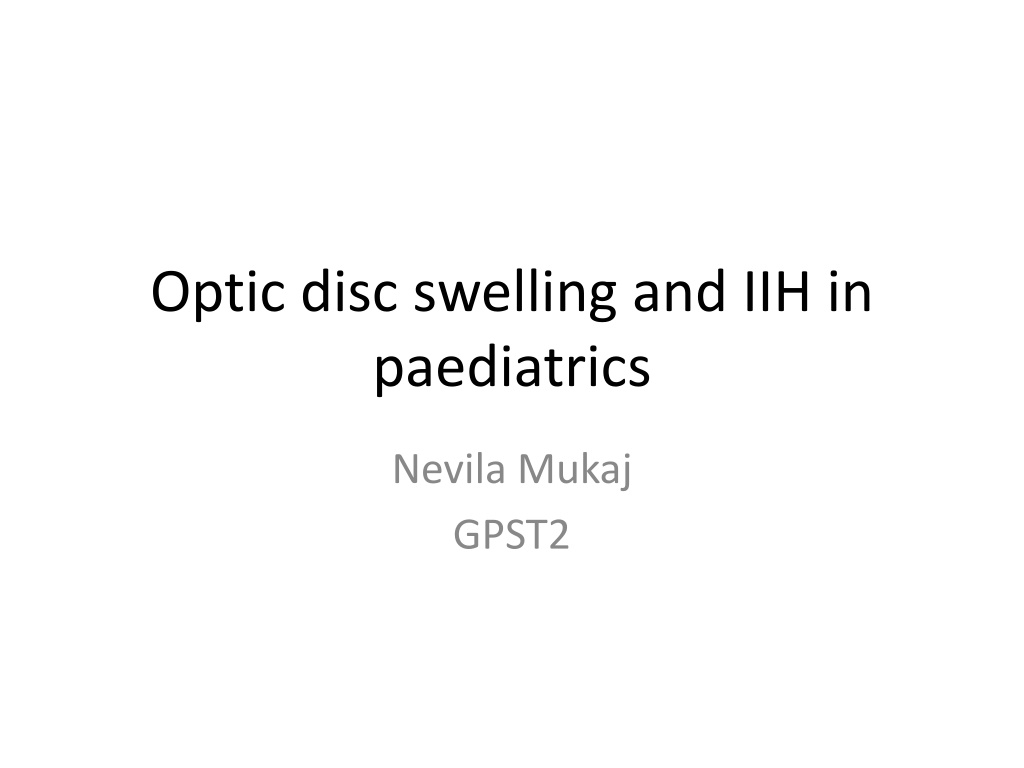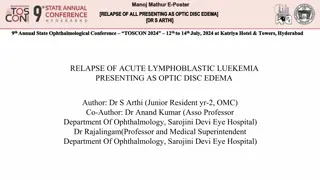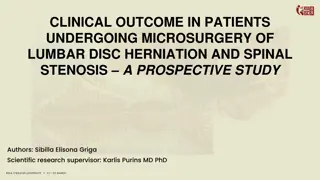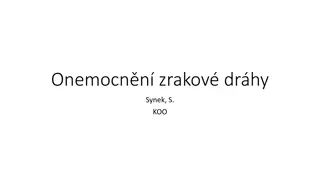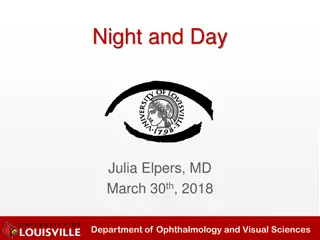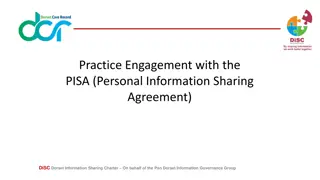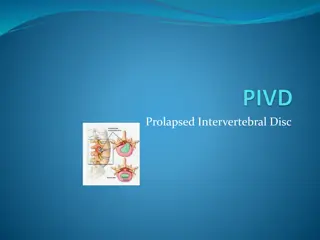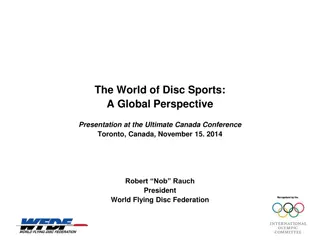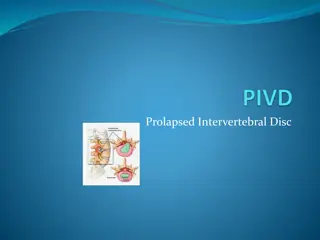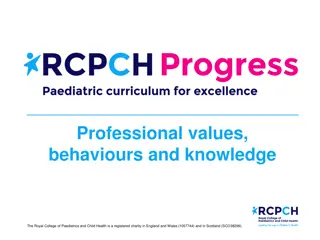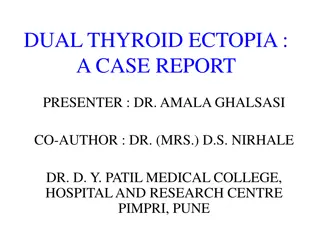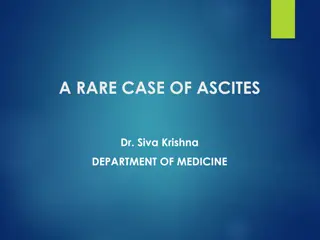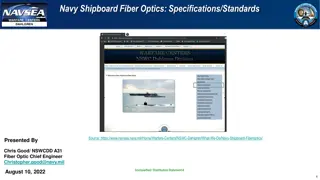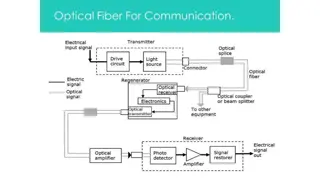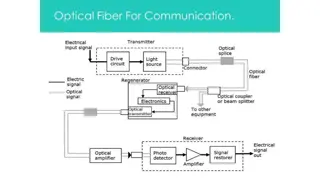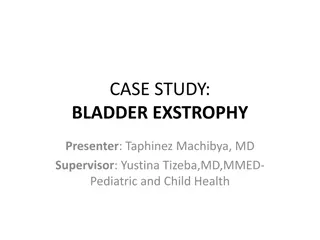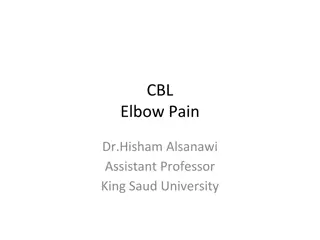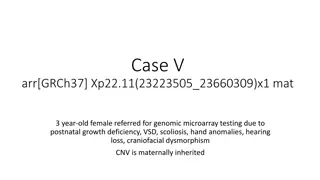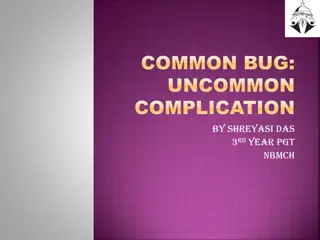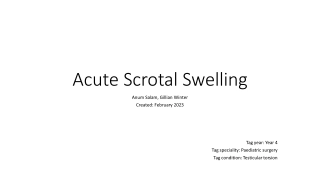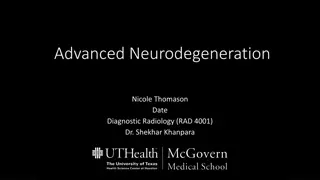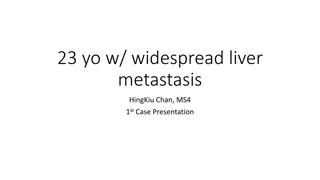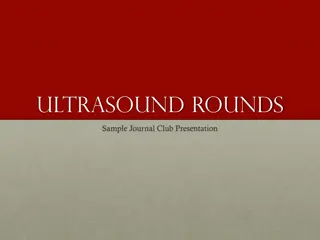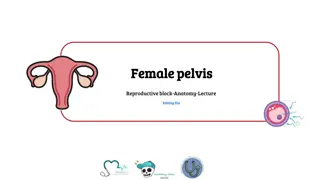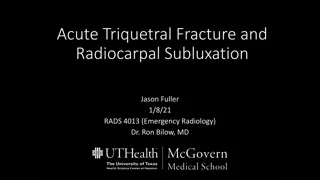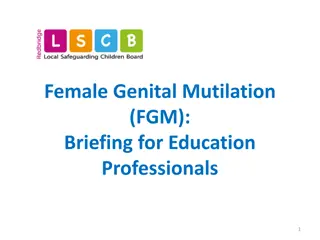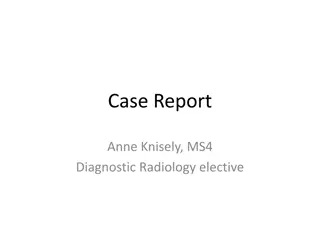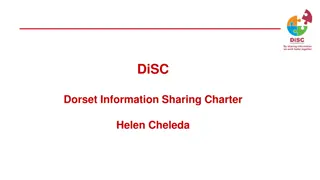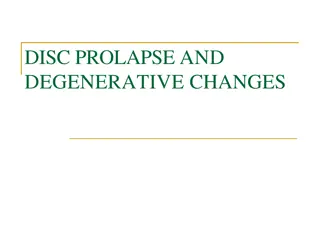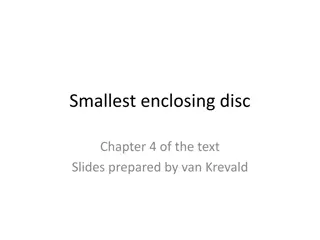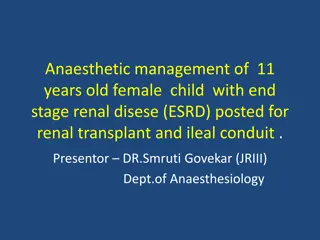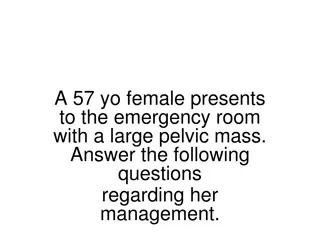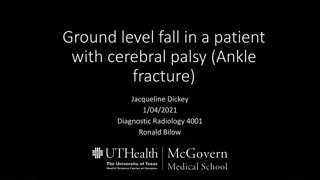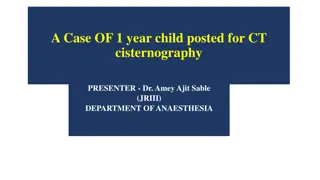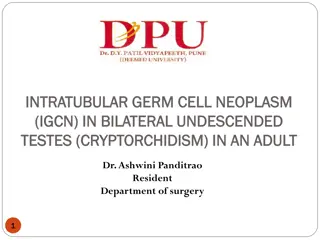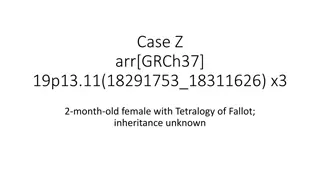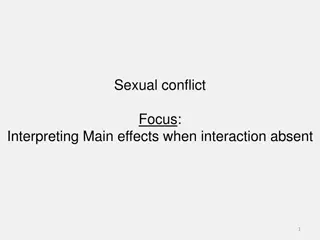Optic Disc Swelling and IIH in Paediatrics: A Case Study of Papilloedema in a 12-year-old Female
This case study presents a 12-year-old female who was referred for papilloedema with symptoms of headaches, intermittent vomiting, and blurred vision that worsens upon getting up. She had no history of trauma, diplopia, or significant medical conditions. Examination revealed optic disc swelling, hyperemia, and engorged veins. Further investigations such as visual fields testing and B-scan imaging were planned to assist in the diagnosis and management of this pediatric patient.
Download Presentation

Please find below an Image/Link to download the presentation.
The content on the website is provided AS IS for your information and personal use only. It may not be sold, licensed, or shared on other websites without obtaining consent from the author. Download presentation by click this link. If you encounter any issues during the download, it is possible that the publisher has removed the file from their server.
E N D
Presentation Transcript
Optic disc swelling and IIH in paediatrics Nevila Mukaj GPST2
Case study 12 year old female Referred by Optometrist for Papilloedema Blurred vision on and off Appears when getting up from lying position 10/7 Lasts for a few seconds
Presenting complain Headaches, intermittent Localised in parietal area Intermittent vomiting ( started 4 days after headaches) Headaches improve after vomiting
Presenting complain At the time of the symptoms she was in camping trip participating in games and not able to concentrate Fever on the day of the presentation No diplopia No trauma BP 106/74 mmHg
History PMH: NIL Wears glasses ( short sighted ) Growth and development normal Up to date with vaccination Not taking any medication or vitamins NKDA
Social and family history Lives with parents No social concerns, attends school Mum and maternal grandmother have migraines No family history of eye problems
Examination in emergency eye clinic Visual acuity : right eye 6/5, left eye 6/6 Colour vision normal Pupils equal and reacting to light/accomodation No RAPD found in both eyes Anterior segments normal in both eyes Visual fields to be done ( next visit)
Fundoscopy right eye Red reflex seen, media clear Blurred disc margins noted with swollen disc Hyperaemia noted The veins seem engorged No haemorrhages seen Spontaneous venous pulsation not noted Macula normal ( left eye similar findings)
B scan image Left eye ( 7/08/17) No drusens noted
B Scan image right eye ( 07/08/17) No drusens noted
Diagnosis and management Provisional diagnoses as papilloedema Referred to paediatrics at Colchester general for further investigations the same day
Hospital admission 7/08/17 MRI : The ventricles are normal in size and are undisplaced. No significant alteration of signal is seen in the brainstem, cerebellum or cerebral cortex. Trace of fluid in the left mastoid air cells of doubtful significance.
Hospital admission No blood test done at this point Documented as normal neurology and no red flag symptoms on the discharge letter Discharged home with follow up by local paediatric team and ophthalmology
15/08/17 Headaches continue and have not subsided Episodes of vomiting again Presented to optometrist who referred her to us for increasing signs of papilloedema Seen in emergency eye clinic
Findings Comparing to the previous optic nerve head picture, her oedema had increased with exudates in he right eye and disc haemorrhages seen in the left She has grade IV papilloedema She was seen by Mr Bansal as well on this occasion and referred urgently to paediatric team in hospital
Hospital admission ( 2nd) 15/08/17 On this admission she had: MRV which did report no cortical venous or dural sinus thrombosis seen. Blood tests: U&E, FBC, LFT, CRP, ESR, Coagulation, Bone profile, Haematinics, LH, Prolactin, FSH were all normal.
Hospital admission (2nd) She was seen by ENT and examination was unremarkable ( due to hyperaemic left ear/tonsil and palpable neck lymph node) Discussed with neurology at Addenbrooke s hospital and transferred there for possible LP Diagnosis on discharge letter benign intracranial hypertension
15/08/17 Addenbrook s hospital Diagnostic and therapeutic LP Commenced on Acetazolamide For follow up by paediatric neurologist and Ophthalmologist in Addensbrook s
Swollen optic disc in children Manifestation of systemic disease in paediatric patients Causes: - optic nerve infectious - infiltrative, - inflammatory or oedema with or without raised intracranial pressure.
Bilateral disc swelling and with raised ICP Papilloedema Tumour. Cerebral trauma. Intracerebral or subdural haemorrhage. Cerebral inflammation/infection. Cerebral abscess. Idiopathic intracranial hypertension
Other causes Adrenal dysfunction and Addison disease Hypothyroidism Hyperthyroidism Hypocalcaemia Respiratory failure
Other causes Medication : tetracycline, minocycline, lithium, isotretinoin, nalidixic acid corticosteroids (both use and withdrawal)
Optic neuritis Bilateral in 75% of cases in kids Immune mediated 85% of cases are associated with a recent immunization or an infection, usually a viral infection Non viral infection, such as pertussis, infectious mononucleosis, toxoplasmosis, or brucella.
Optic neuritis Specific meningeal infections and infiltrations involving the optic nerves, including cryptococcus, tuberculosis, and sarcoidosis Vasculitis, such as systemic lupus erythematosus Syphilis Leukaemia Associated with bee and wasp stings
Other causes Toxic optic neuropathy ( mainly malnutrition /B12 deficiency in paediatrics) Malignant hypertension MS Anti-tumor necrosis factor (anti-TNF) drugs Diabetic papillopathy
Paediatric Idiopathic Intracranial Hypertension (IIH) Prevalence of IIH in paediatric population is not known, but is not uncommon IIH is prone to misdiagnosis. Accurate diagnosis is essential because of the risk of visual failure Under 6 years, a specific cause can usually be identified
Paediatric IIH Prepubertal children with IIH have a lower incidence of obesity compared with adults Primary or idiopathic causes are seen after 11 years There is no sex predilection They face the same risk as adults to develop permanent visual loss.
Signs and symptoms Headaches intermittent , worst at night Aggravated by sudden movements Blurred vision Visual loss (typically visual field but rarely visual acuity loss) Transient visual obscurations Double vision Photophobia
Signs and symptoms Irritability Vomiting Loss of concentration Clumsiness Dizziness Fever
General physical examination Signs and symptoms of otitis media or mastoiditis should raise the suspicion of venous sinus thrombosis. Acne vulgaris, should ask patient about use of retinoid acid or tetracycline. Signs of thyroid or adrenal dysfunction
General physical examination Neurological exam will be normal with the expectation of papilloedema or/and weakness of abducens nerve. Visual acuity is helpful Visual fields is important for both examining and monitoring response to therapy.
Investigations Magnetic resonance imaging (MRI) of the brain with magnetic resonance venography (MRV) is preferred. Increased sinus venous pressure is known mechanism of raised ICP The importance of venous sinus pressure is seen in children who develop increased ICP after thrombosis of 1 or more dural sinuses, usually secondary to otitis or mastoiditis Studies of paediatric IIH patients have shown elevated sagittal sinus pressure, which could lead to resistance to CSF absorption at the arachnoid villi.
LP LP studies will be normal in IIH except for an elevated opening pressure. The diagnosis of IIH requires that the CSF be of normal composition with respect to cell count, protein, and glucose. CSF pressure may be normal in patients with florid papilledema. If the diagnosis of IIH is suspected, repeat lumbar puncture or prolonged pressure monitoring should be considered.
Treatment goals To preserve optic nerve function while managing ICP. Management is multifaceted. Optic nerve function should be carefully monitored with an assessment of visual acuity, colour vision, optic nerve head appearance, and perimeter.
Medical treatment Successful in treating paediatric IHH in most patients. Sometimes, the symptoms of IHH resolve with the initial diagnostic lumbar puncture. When medical treatment is required, most children respond to medications such as acetazolamide, steroids furosemide, or topiramate.
Medical treatment monitoring Acetazolamide is administered at an initial dosage of 25 mg/kg/day, which is titrated upward until a clinical response is attained (maximum, 100 mg/kg/day). Electrolyte concentrations must be monitored to evaluate for the development of hypokalaemia and acidosis.
Medical treatment monitoring If the patient remains on treatment for more than 6 months, renal ultrasonography should be ordered to look for the presence of renal calculi. If acetazolamide is ineffective, prednisone can be given at a dosage of 2 mg/kg/day for 2 weeks, followed by a 2-week taper.
Surgical treatment Surgical procedures are indicated for children with severe headaches, visual loss, or both, despite maximal tolerated medical treatment. Optic nerve sheath fenestration Sinus stenting Shunting LP
Treatment and follow up The care of patients with IHH requires a multidisciplinary approach in treatment and monitoring. Prompt and accurate communication among specialists is necessary to ensure timely treatment and optimal outcomes. There are no standard guidelines for the treatment of IIH
Treatment and follow up The frequency of the follow-up visits is determined by a number of factors, to include the following: Initial visual function of the patient Underlying disease causing increased ICP Compliance of the patient with medical therapy ( blood test monitoring for Acetazolamide)
Treatment and follow up Optic nerve function should be carefully monitored with an assessment of visual acuity, color vision, optic nerve head appearance, and perimetry OCT may be of value in follow up and monitoring for recurrence in paediatric IIH.
Education Patient and parental education as to the seriousness of permanent visual loss should be given. In particular, it is essential to educate patients regarding the potential for disabling blindness. Early intervention in rapidly declining visual function is crucial to improve the long-term visual outcome.
References BMJ Nice International journal of nephrology BNF Journal of Developmental Medicine and Child Neurology
